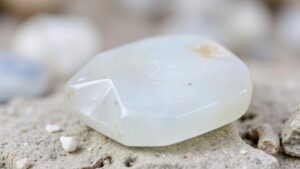Selling to Jewelers: Turning Your Raw Finds into Luxurious Accessories
Selling to Jewelers: Turning Your Raw Finds into Luxurious Accessories for Rockhounds and Mineral Collectors
For rockhounds and mineral collectors, the thrill of the hunt is often rivaled only by the potential profit from their finds. Selling raw minerals and gemstones to jewelers can be a lucrative endeavor, provided you understand the market and the value of your materials. This guide aims to equip aspiring sellers with the knowledge and strategies necessary to transform their raw finds into stunning, sellable accessories.
Understanding the Jewelry Market
The jewelry market is vast and diverse, with consumers looking for everything from custom pieces to high-end luxury items. In 2022, the global jewelry market was valued at approximately $230 billion and is expected to reach $300 billion by 2028, growing at a CAGR of 4.6%. This growth presents ample opportunities for mineral collectors to tap into the increasing demand for unique and genuine materials.
Identifying Valuable Finds
Before reaching out to jewelers, its crucial to accurately assess the value of your finds. Focus on the following aspects:
- Type of Mineral: Different minerals have varying market values. For example, diamonds, emeralds, and sapphires typically command high prices, while quartz and feldspar are often less valuable.
- Quality and Clarity: The quality of the stone, including its clarity and color, significantly affects its value. For example, a flawless emerald can fetch prices exceeding $20,000 per carat, whereas a lower-grade counterpart might only see a few hundred dollars.
- Size: Larger stones are generally more valuable, particularly when they exhibit desirable properties. A 5-carat diamond would vastly outperform a 1-carat diamond of similar quality.
- Rarity: Unique and rare finds, like tsavorite garnets or paraiba tourmaline, can greatly increase the potential for profit.
Preparing Your Raw Finds for Sale
Once youve identified valuable mineral specimens, the next step is preparation. Consider the following:
- Cleaning and Polishing: Clean your specimens thoroughly without damaging them. Use mild soap and water, and avoid harsh chemicals. For polishing, use specialized tools designed for stones.
- Documentation: Provide certificates of authenticity, especially for high-value items. Documentation can significantly boost buyer confidence and value.
- Pricing: Research the current market trends to set competitive prices. Websites like Gem Rock Auctions provide valuable auction data and price points for various stones.
Connecting with Jewelers
Building relationships with jewelers is fundamental to selling your materials. Here are effective strategies:
- Networking: Attend gem and mineral shows, trade fairs, and industry events to meet potential buyers. Establishing a rapport can lead to future sales opportunities.
- Online Platforms: Use online marketplaces like Etsy or eBay to showcase your specimens. Social media platforms such as Instagram can also serve as valuable marketing tools when exhibiting your finds.
- Cold Outreach: Reach out to local jewelers via email or in-person visits. Present a portfolio of your best specimens to leave a lasting impression.
The Role of Craftsmanship in Value Addition
Selling raw materials is only part of the equation; the craftsmanship that goes into creating finished jewelry pieces adds synonymous value. Consider collaborating with skilled jewelers who can design stunning pieces from your raw materials. For example, consider the example of a raw diamond, which in its uncut state may have minimal appeal. But, once crafted into an exquisite ring, its value can increase exponentially.
Real-World Applications
Numerous successful ventures illustrate the lucrative potential of selling raw finds. For example, a collector in Arizona turned a series of locally sourced turquoise stones into beautifully crafted jewelry that was subsequently sold at local markets and online, leading to an annual revenue of over $50,000. This highlights the real-world potential for mineral collectors who are willing to invest time and energy into transforming their finds into sellable products.
Actionable Takeaways
Transforming raw mineral finds into profitable jewelry sales involves an understanding of market value, proper preparation, and building solid relationships within the jewelry industry. Here is a summary of actionable steps:
- Educate yourself on the value of your minerals.
- Prepare your specimens meticulously.
- Network extensively and explore various sales platforms.
- Consider partnerships with jewelers to maximize value through craftsmanship.
By following these guidelines, rockhounds and mineral collectors can carve out a niche in the jewelry market, turning their passion into profit.


